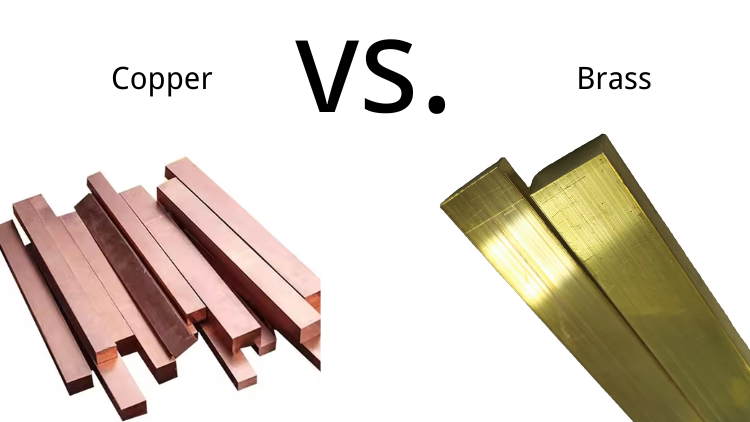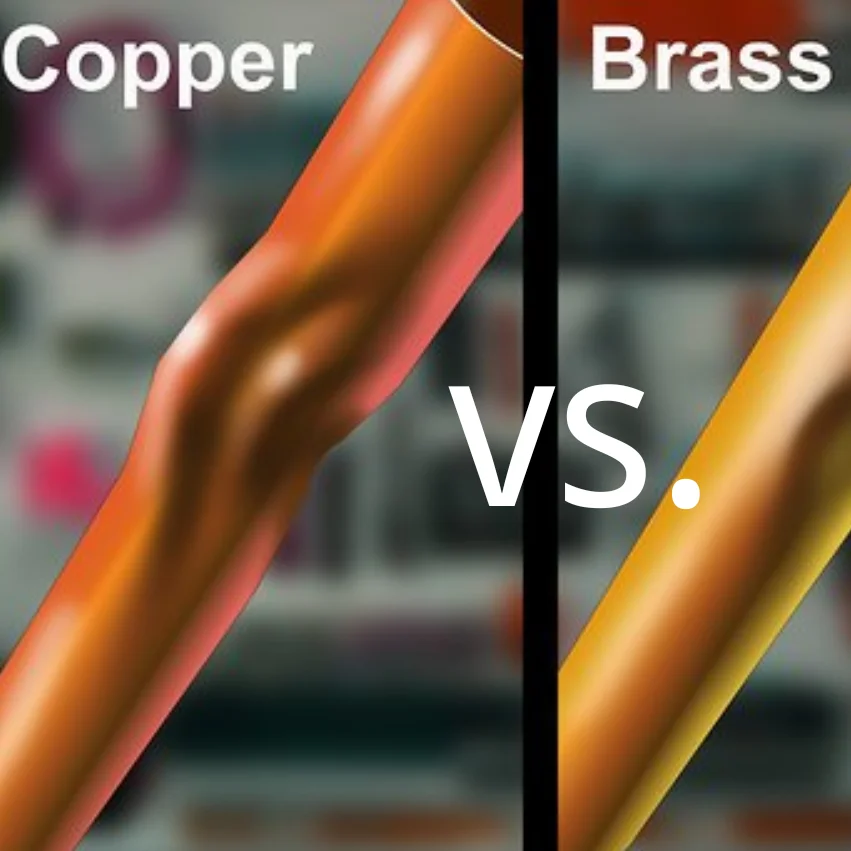Specific ways to tell the difference between copper and brass, including visual cues, stamping codes, hardness testing, and more So, how do you tell the two metals apart? In this guide, we’ll take a deep dive.
What Is Copper?
Copper, a reddish-brown metal, is one of the oldest metals used by humans and is prized for its excellent electrical and thermal conductivity. Its properties make it highly versatile and valuable in numerous applications. It is a good sheet metal material.
It has an electrical conductivity of 5.96 x 10^7 Siemens per meter (S/m) and can be easily drawn into wires and hammered into thin sheets without breaking.
With a thermal conductivity of about 401 Watts per meter per Kelvin (W/m·K), copper is exceptionally efficient at transferring heat.
When exposed to the elements, copper forms a green patina, known as verdigris. This patina acts as a protective layer, preventing further corrosion and extending the lifespan of copper products.

What Is Brass?
Brass typically contains between 55% and 95% copper, with the remaining percentage made up of zinc. For instance, a common alloy known as 70/30 brass or barrel brass consists of 70% copper and 30% zinc.
Its appearance is bright and golden, with color variations ranging from red to yellow based on the copper content. Higher copper levels result in a redder hue, while more zinc yields a yellower color.
This alloy is highly ductile and malleable, allowing it to be easily shaped and drawn into wire or sheet without breaking.
Its resistance to corrosion, particularly from salt water, makes it a durable choice for many applications. Additionally, brass possesses excellent acoustic properties, enhancing its use in musical instruments.
Related Reading: Is Titanium Lighter Than Aluminum?
How To Tell The Difference Between Copper And Brass?
Identifying whether a metal is copper or brass requires checking for several key features. Follow these steps for clear and accurate identification:
Step 1: Check the Color
Copper is a reddish-brown color. Copper items may also develop a green sheen if they are exposed to air and moisture for a long period of time.
Brass is a bright, golden-yellow color. Brass does not develop a green sheen but will fade to a darker, duller color.
Step 2: Compare Weights
Pick up the items and weigh them. Copper is heavier and denser (8.96 g/cm³). Brass is slightly lighter (8.4 to 8.7 g/cm³).
Step 3: Tap the Metal
Use a small hammer or other metal object to gently tap the metal. Copper produces a deep, resonant sound. Brass produces a brighter, louder sound.
Step 4: Perform the Vinegar and Salt Test
Mix a vinegar and salt solution. Place a few drops on the surface of the metal and observe the reaction. Copper will show a green-blue reaction. Brass may darken slightly or have a minimal reaction.
Step 5: Use a Magnet
Place a magnet near the metal. Copper is not attracted to magnets. Brass is also not attracted to magnets unless there are impurities, which is rare.
Step 6: Consider the Purpose
Consider the purpose and how the item will be used. Copper is conductive and durable, and is often used for wiring, plumbing, and cookware. Brass has a lustrous appearance and corrosion resistance and is often used for decorative items, musical instruments, and plumbing fixtures.
Step 7: Evaluate the Price
If possible, check the current market price. Copper is generally more expensive, about $8,000 per metric ton.
Brass is less expensive, generally about $3,000 to $4,000 per metric ton.
Related Reading: Stainless Steel Vs Copper Cookware: The Pros & Cons

Other Ways to Differentiate Copper from Brass
Identification by Stamping Code
Industrial brass products often have a stamping code that identifies the exact alloy. In the North American and European systems, these codes begin with “C” followed by several digits.
North America: The UNS (Unified Numbering System) uses brass labels beginning with C2, C3, or C4, or codes from C83300 to C89999.
Copper, if labeled, may use codes from C10100 to C15999 and C80000 to C81399. Typically, the last two digits are omitted.
Europe: In the European system, both copper and brass codes begin with “C”. Brass codes end with the letters L, M, N, P, or R, while copper codes end with A, B, C, or D.
Old European standards may list the element symbol followed by a percentage. Any code containing “Cu” and “Zn” indicates brass.
By Scratch Test
Generally harder than copper, but only slightly. Brass will not be scratched by a standard U.S. coin.
Copper is softer, especially when untreated. You can often scratch copper with a U.S. coin. Copper is also more ductile than brass and is easier to bend.
By combining the differences between copper and brass, you can choose the material that suits you for processing. You can come to Widetop to get high-quality custom metal parts. Choosing Widetop for processing can not only ensure processing accuracy and efficiency but also obtain professional technical support and services. If you need it, click here to contact us.
Other Questions
Do Magnets Attract Copper?
No, magnets do not attract copper. Copper is a non-magnetic metal, meaning it does not exhibit magnetic properties and will not be attracted to a magnet. This is a quick and easy way to test if an item is not copper-coated steel or another magnetic metal.
What Does Pure Copper Look Like?
Pure copper has a reddish-brown color that is quite distinctive. It is shiny and metallic when freshly polished or cut. Over time, if exposed to air and moisture, it develops a green patina known as verdigris. This natural tarnish is often seen on old copper structures and statues.
Which Is More Expensive, Copper Or Brass?
Copper is generally more expensive than brass. Brass is an alloy made from copper and zinc, and it is less expensive to produce due to the lower cost of zinc. The exact prices can fluctuate based on market conditions, but typically, pure copper commands a higher price due to its extensive use in electrical wiring, plumbing, and other industrial applications.
How To Tell The Difference Between Copper And Bronze?
Copper and bronze, though similar, can be distinguished through several key characteristics. Pure copper has a distinctive reddish-brown color, while bronze, an alloy mainly composed of copper and tin, exhibits a softer yellow-brown hue.
With a density of about 8.96 g/cm³, copper is denser than bronze, which has a slightly lower density ranging from 8.7 to 8.9 g/cm³.
When struck, copper produces a clear, high-pitched ringing sound, whereas bronze sounds duller and less resonant.
Additionally, copper is relatively soft and ductile, making it easily scratched or dented. Bronze, on the other hand, is harder and more durable due to the addition of tin and sometimes other elements like aluminum or nickel.



